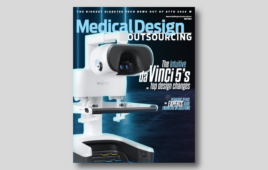
DNA rendering. [Image from Warren Umoh on Unsplash]
Using short pieces of DNA floating in the bloodstream of cancer patients, doctors could diagnose specific cancer types and choose effective treatments. The new method developed at UW has compatibility with liquid biopsy testing equipment already approved in the U.S. Researchers say this could accelerate the method’s pathway to helping patients.
“Liquid biopsies are much less invasive than a tissue biopsy — which may even be impossible to do in some cases, depending on where a patient’s tumor is,” said Marina Sharifi, a professor of medicine and oncologist in UW–Madison’s School of Medicine and Public Health. “It’s much easier to do them multiple times over the course of a patient’s disease to monitor the status of cancer and its response to treatment.”
The researchers explain that cancerous tumors shed cell-free DNA into the bloodstream as they grow. However, not all parts of the DNA “tumble away,” as cells store some DNA by coiling it up in histones.
UW’s Kyle Helzer said parts of DNA containing genes that cancer cells use often uncoil more frequently, creating a higher likelihood of fragmentation.
“We’re exploiting that larger distribution of those regions among cell-free DNA to identify cancer types,” said Helzer. Helzer also serves as a co-lead author of the study along with Sharifi and scientist Jamie Sperger.
More about the cancer DNA research
Led by senior authors Shuang (George) Zhao and Joshua Lang, the researchers used DNA fragments found in blood samples from a past study of nearly 200 patients and new samples from more than 300 patients treated for breast, lung, prostate or bladder cancers.
Dividing each sample group into two, the researchers used one portion to train a machine learning algorithm to identify patterns among the fragments. They used the other portion to test the trained algorithm. The team says the algorithm topped 80% accuracy translating the results of a liquid biopsy into both a cancer diagnosis and the specific types of cancer afflicting a patient.
Additionally, the approach managed to tell apart two subtypes of prostate cancer — the common adenocarcinoma and the neuroendocrine prostate cancer (NEPC) variant. NEPC is often difficult to distinguish from adenocarcinoma, but it requires aggressive action, the team says.
“Currently, the only way to diagnose NEPC is via a needle biopsy of a tumor site, and it can be difficult to get a conclusive answer from this approach, even if we have a high clinical suspicion for NEPC,” Sharifi says.
The researchers processed the samples using cell-free DNA sequencing technology from Integrated DNA Technologies. This can reduce the time and cost of testing compared to other methods of “fragmentomic” cancer DNA analysis.
“Most commercial panels have been developed around the most important cancer genes that indicate certain drugs for treatment, and they sequence those select genes,” Zhao said. “What we’ve shown is that we can use those same panels and same targeted genes to look at the fragmentomics of the cell-free DNA in a blood sample and identify the type of cancer a patient has.”




![A photo of the Medtronic GI Genius ColonPro polyp detection system flagging a potential sign of colon cancer during a colonoscopy. [Photo courtesy of Medtronic]](https://www.medicaldesignandoutsourcing.com/wp-content/uploads/2024/04/Medtronic-GI-Genius-doctors-268x170.jpg)